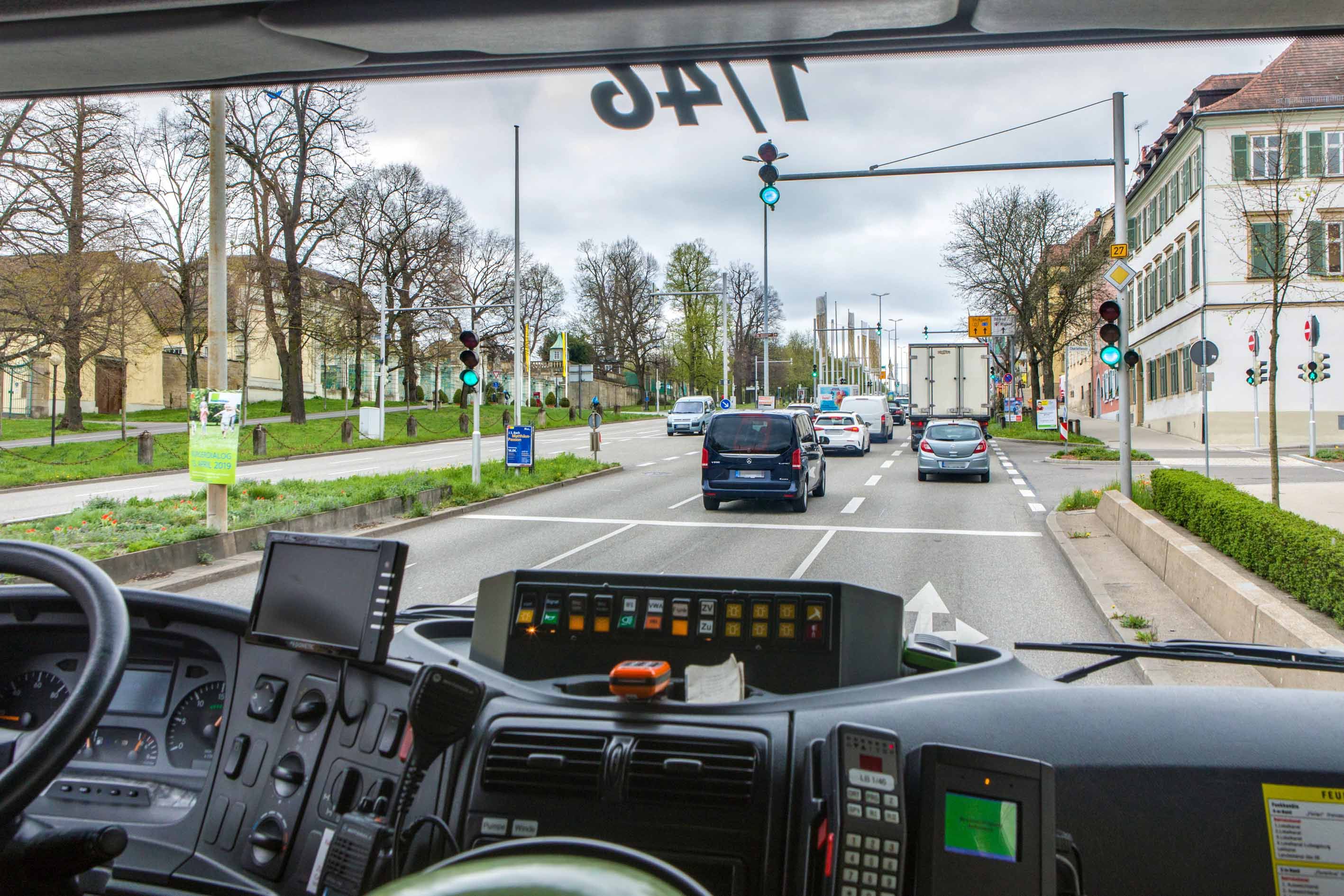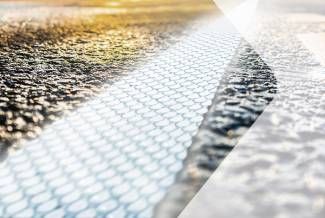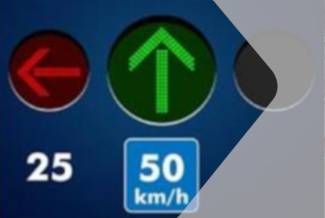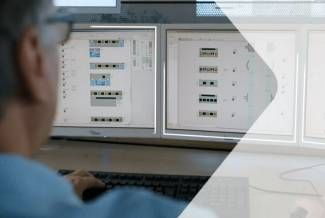Car2x-Communication:
For a better mobility infrastructure
Vehicles have long communicated not only with each other – known as Car-2-Car (C2C) or Vehicle-2-Vehicle (V2V) – but also with their surroundings, such as traffic lights, traffic signs, road markings and much more. This is called Car2x, where the "x" can stand for anything that exchanges information with vehicles. This includes automated systems that alert drivers to dangers (e.g. accidents, black ice, etc.) and determine the best possible route - based on real-time data. Car2x communication therefore has a lot of potential to help drivers move forward more efficiently and contribute to greater safety in road traffic.
Definition: Car2x-Communication
Car2x or Car-to-x basically stands for technologies with which vehicles (cars, trucks, etc.) exchange information in real time. Vehicles send out standardised information, e.g. about speed, GPS, location, etc. The traffic infrastructure also sends out data, e.g. a traffic jam warning, accident warning, information on alternative routes, detours and much more.
Good to know: Infrastructure and other vehicles can use this information to draw a more accurate picture of the current traffic situation and make better – data-based – decisions. The exchange takes place via WLAN or mobile radio.
"Green wave" application example:
If vehicles and infrastructure communicate in both directions and exchange their real-time data, the systems can regulate the flow of traffic so that (almost) all road users drive through the city with a green wave.

V2I, V2X, V2V, C2X, C2C, etc. –
Which abbreviation means what?
Car2x communication is also referred to as V2x, especially in the English-speaking world. To avoid confusion, we will briefly introduce the most important abbreviations around the topic of Car2x. V (= Vehicle) stands for the same as C (= Car).
V2I (Vehicle to Infrastructure):
The car sends information to its surroundings (e.g. traffic lights, signalling systems, traffic control centres).
V2I = C2I
I2V (Infrastructure to Vehicle):
Connected components of the infrastructure send information to the vehicle.
I2V = I2C
V2V (Vehicle to Vehicle):
Vehicles exchange information with each other - e.g. about obstacles on the road, road surface, weather conditions, etc.
V2V = C2C
V2X (Vehicle to X):
Vehicles and the environment exchange their respective traffic data with each other in real time.
V2X = C2X
Good to know: Internationally, V2X communication is more commonly used. In Europe, however, the term Car2x communication is more common (rarely also Car-to-x or Cartox). All vehicles are both transmitters and receivers of data.
Requirements for Car2x
All in all, comprehensive Car2x communication will ensure more safety on the roads and flowing traffic without (or with hardly any) delays. But in order for Car2x technology to assert itself in cities, there are still some prerequisites to be met. Some of them are technical, others political:
#1 5G technology
The linchpin of Car2x is the secure and fast transfer of data. This requires a nationwide expansion of 5G technology.
#2 Area-wide networking
Comprehensive networking: Traffic control centres and the entire infrastructure in cities must be networked accordingly to enable Car2x communication.
#3 Cooperation between public and private sector
Cities, car manufacturers and others must work together to ensure that the technology provided works in (as far as possible) all cities and with all vehicles (brands, classes, etc.).
#4 Uniform systems
In addition, (Europe-wide) standards are needed so that the Car2x technology ideally also functions across borders. This is unlikely to happen without political regulations.
Good to know: The CAR 2 CAR Communication Consortium (C2C-CC) was founded back in 2002 to develop European standards for the interoperability of systems to improve safety and efficiency in traffic. An important goal is to contribute to accident-free traffic (Vision Zero).
Car2x: Related topics & SWARCO solutions
Car2x-Communication for safer roads
As far as increased safety on the roads is concerned, Car2x communication can make decisive contributions in many ways. Here are a few examples.
Car2x can ...
Emergency vehicles can warn vehicles ahead in good time so that there is more time to change lanes.
Automated message systems warn vehicles in good time of road works, accidents, storms, closed roads, etc., so that they can switch to alternative routes.
Vehicles in front inform drivers coming behind about black ice, leaves, deer crossing or other adversities on the roads.
Cars in cities communicate with traffic lights or signals in real time to determine the optimal speed for a green wave.
Unnecessary braking and acceleration can be reduced to a minimum, making traffic safer and even saving fuel.
Vehicles on the motorway communicate with each other to optimise traffic flow and avoid unnecessary congestion.
Car2X communication for moving traffic:
Real-time data is key
In the future, when traffic is diverted in time, immediately when a need arises and when green waves are no longer the exception but the rule, real-time data plays the decisive role in such a scenario. Because without a constant exchange of real-time data, there are hardly any possibilities for infrastructure operators as well as road users to improve the general traffic situation.
The possibilities of Car2x, on the other hand, are almost unlimited. The technology can reduce congestion, enable green waves through traffic light information (e.g. countdowns) and alleviate the parking situation in large cities by directing vehicles specifically to free spaces. Both increase the flow of traffic and reduce the stress level of drivers.
Last but not least: the technologies around Car2x are very versatile. More communication will ensure more safety and more efficiency in road traffic. Finally, the environment could also benefit from Car2x communication, because less fuel is consumed and demand-oriented - data-based! - traffic policy decisions can be made at any time.
FAQs – Frequently asked questions briefly explained
The term Car2x is a made-up word that combines two things under one hat:
communication with other vehicles (C2C, V2V).
communication with the infrastructure (Car2I, V2I).
So with Car2x, everything communicates with everyone, or in other words: all vehicles and the entire transport infrastructure become both the sender and receiver of data.
Communication usually takes place in real time and in both directions. Traffic lights communicate with cars, cars communicate with traffic lights, etc. Sending and receiving is done either via WLAN or the mobile network. And for identification purposes, each vehicle gets its own client number - comparable to an IP address on the internet.
Car2x technology was developed in the 2010s. Vehicles communicate with their environment "2x" and also with each other "2Car". The exchange of information between neighbouring vehicles is a special case and is called Car2Car. In the English-speaking world, the terms Vehicle2Vehicle (V2V) and V2x are used synonymously.
Car2x supports numerous safety systems, such as the following:
Lane departure warning
Collision protection (warning with brake lights)
Intersection assistant
Emergency vehicle detector
Roadworks warning system
Possibilities for platooning (= forming columns)
Since large amounts of data are collected, exchanged and processed in C2x communication, an upgrade to the new 5G standard is an important prerequisite. This not only affects the vehicles themselves, but also the entiretraffic telematics in cities.
One challenge for the success of Car2X is compliance with the European General Data Protection Regulation (GDPR). In order for the technology to develop its potential, large amounts of data must inevitably be exchanged, collected and processed. The misuse of this data must be prevented (technically).
To prevent manipulation or misuse by attackers, the systems used (hardware and software) must always be up to date with the latest security technology. IT security therefore also plays an important role in other, related topics, such as connected and automated driving.


